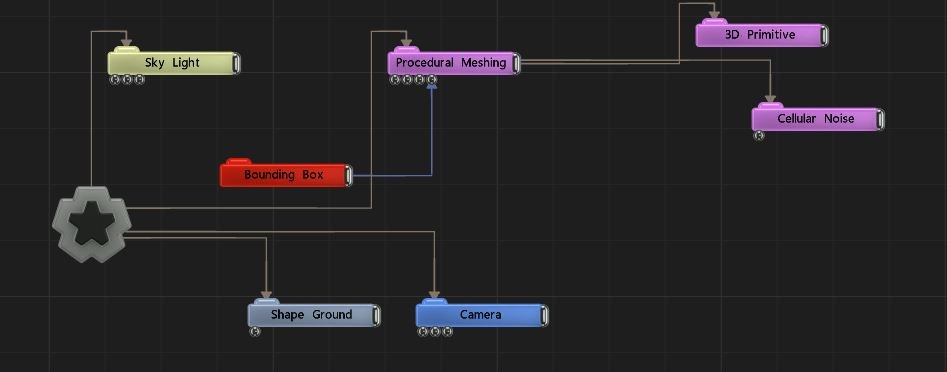Cellular Noise
Generates a cellular noise pattern for a procedural.



This node generates an infinite cellular noise pattern. It works by dividing the space in to cells and placing a point in each cell, which is expanded to a sphere. the points are then randomly ofset to form the cellular noise.
Nodes connected to this node will generally follow the parent child heirarchy. Other Procedural Generator nodes can be configured to combine with this shape using thier CSG modes, and displacement nodes will only apply to this shape.
These properties control the core behaviours of the node.
| Parameter | Details |
|---|---|
| Distance Offset | Offsets the distance field values, causing the generated distance field to expand of contract. |
| Cell Size | Size of the generated cells. |
| Jitter | How much the spheres are randomly moved from their original cell positions. |
| CSG Mode | These options change how a this node combines with the rest of the procedural system. to find out more, see csg operation.
|
| CSG Blend Weight | How much the new procedural blends with the old procedurals, depending on the CSG Blend Mode. |
| Material Colour | Modify the colour for the procedural material. |
| Custom CSG Code | Type your Custom code here, using the HLSL language. Read more on Editable Code. |
| Name | Description | Typical Input |
|---|---|---|
| Transform Modifiers | Apply the transforms of another node to this node. | Null |
| Target Node | Modifiy the rotations of the node to always direct the z axis towards the input. | Null |
| Local Transform Override | Apply the transforms of another node to this node, relative to its parent. | Null |